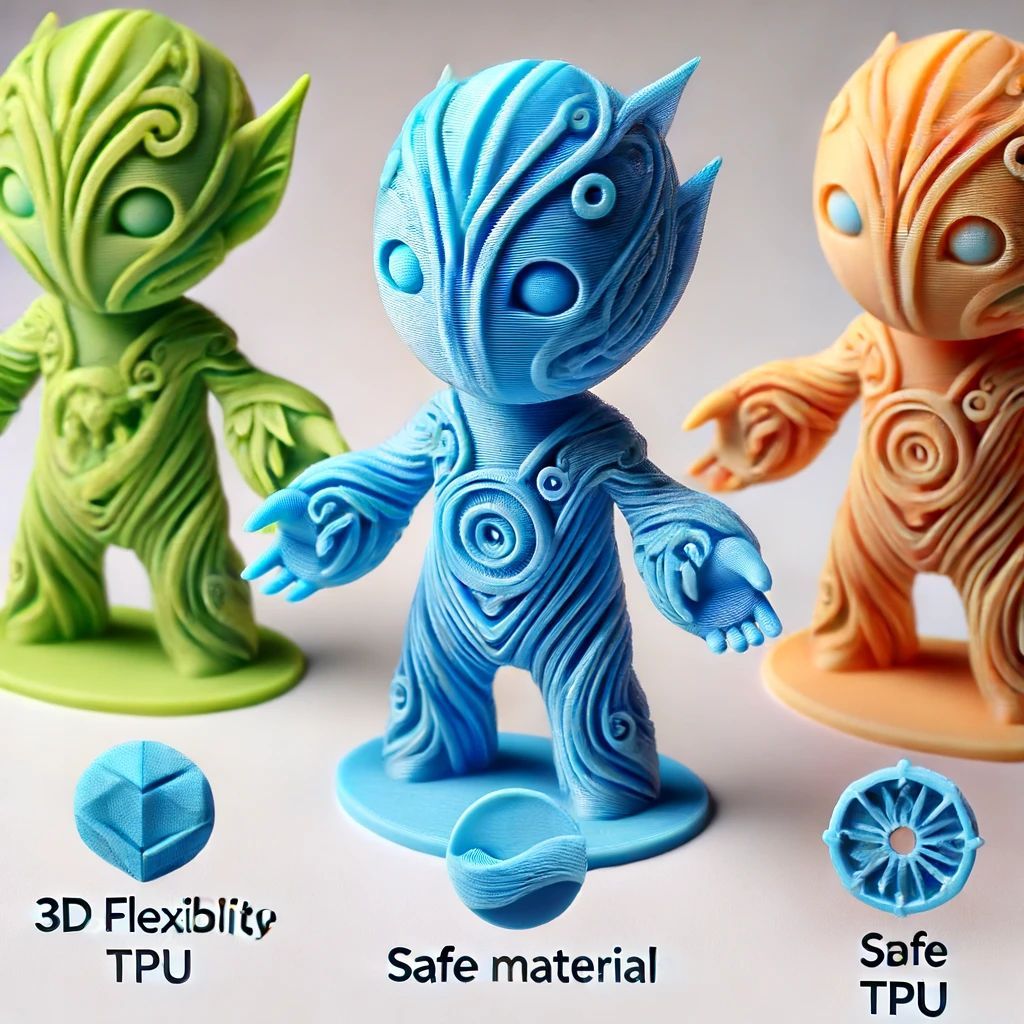The World's Coolest and Craziest Things to Be 3D Printed
The World's Coolest and Craziest Things to Be 3D Printed

Let’s face it - the world is filled with strange and weird things. And let’s be honest, we love that. These strange and weird things are what makes the world so interesting. So what about 3D printed things? We love them too - especially when they’re cool or crazy.
3D printing has a wide range of applications extending beyond the manufacturing of discrete objects and into broader fields such as bio-printing, food printing, architecture, medicine, and more.
Check out this list below to see some of the craziest things being 3D printed right now!
World’s Coolest and Craziest Things Being 3D Printed
3D printing is pretty amazing. It allows for the creation of objects that are fully customisable, often without limitations to size or shape.
This allows for a lot of creative freedom - and the ability to produce unique and interesting things.
This creativity and freedom also means that there’s a whole lot of weird and strange things being 3D printed right now.
We’ve put together a list of some of the world’s coolest and craziest things being 3D printed! For this list, we’ve focused on printing things that are really out there.
We’re not looking at regular things like jewellery, shoes, or even guns. These are the things that make you ask - “Why are they 3D printing that?”
A 3D Printed Moon Village for The International Space Station
The International Space Station (ISS) is a research facility that orbits around the Earth. It is a collaboration between many different countries, with scientists and astronauts from both private and public organisations working together on board.
The ISS is set to be operational for another 5 years or so, but after this, it will be decommissioned. This will leave scientists with no research station in space, so a team from the European Space Agency has proposed building a new one.
The new space station would be built using 3D printing technology, making it the first space station to be printed in space. This also means that it would be significantly cheaper to build than traditional space stations are.
It would be made out of a material called carbon fibre reinforced thermoplastic.
This is an extremely durable and strong material that is also surprisingly lightweight. It would be printed in pieces, put together in space, and then stay floating above the earth for decades.
A 3D Printed Prosthetic Leg for a Child Who Was Born Without One
Prosthetic legs are designed to help people who have had a limb amputated. They are fitted with sensors to track how the person is using it, and how much weight they are putting on it. In this way, they are able to provide feedback and give the person a better idea of their walking abilities.
Rather than having these sensors built into the prosthetic leg, a team at Stanford University has decided to 3D print them. This allows them to make the sensors customisable so they fit the person’s lifestyle better.
For example, they can be made with different materials so they can be worn while swimming. Or they can be made to be particularly sensitive so they are comfortable to wear while sleeping.
All in all, this means the prosthetic leg is more comfortable and gives the wearer better feedback. It is hoped that this will make the wearer feel more confident and less self-conscious wearing it in public.
3D Printed Shoes and Pants Made from Cow Dung
This one is for the fashion lovers out there. As you may know, some shoes are made from leather. This isn’t always an environmentally friendly process, so some designers have started to make leather-free shoes.
This is great news for animal lovers, but it also means that these designers have had to come up with a new source of material for their shoes. Some designers have decided to use cork and other sustainable materials, but many have turned to a more unusual source of material - cow dung.
Yes, you read that correctly. This isn’t the first time that fashion designers have used animal dung as a material.
The most well-known example is probably a line of bags made from kangaroo dung, but cow dung is pretty common too.
It’s a very cheap source of material, and it’s also biodegradable.

A Fully Working Stradivarius Violin that is Fully Printable
The famous Stradivarius violins are some of the most famous violins in the world. They are also very expensive, with one being sold for $15 million in 2011.
Some would argue that the sound these violins produce is worth the price and others would disagree, but whatever the case may be, there are many people who would like to own one. A team at the University of Wisconsin has 3D printed a fully working Stradivarius violin.
This isn’t just a model of one, it actually produces sound. There are a few catches though.
First, it’s not made from the same kind of wood that a real Stradivarius violin is made from, so it doesn’t sound as good.
Second, it cost $8,000 to 3D print, making it far less affordable than a real violin.
So, while it is a very cool thing, it is also probably out of the price range for most people.

A Fully Working Rocket Engine That is Made Entirely Out of 3D Printed Parts
While we’re on the subject of space travel, we’re going to look at a fully working rocket engine that is made entirely out of 3D printed parts.
This engine is made by a company called REL. They are aiming to make the engine at a fraction of the price it is currently done at.
They are hoping to do this by using a process called additive manufacturing. This is when they 3D print the engine pieces using a plastic and then put them together. This means that they don’t need to buy expensive materials that are used in traditional manufacturing plants.
It also means that they can make custom parts that fit together perfectly. This way, they are able to make an engine that is much more efficient than traditional ones. While this is a really cool and strange thing, it’s also a little scary.
If the engine fails there is no way to repair it, and it could cause a disaster if it was to launch.
A Fully Working Organs That Are 3-D Printed Using Stem Cells
We’ve talked about 3D printed organs before, but this is a new development in the field. A group of scientists in the UK have been experimenting with 3D printed organs.
They have designed a variety of different tissues that have been printed into small sheets of cells. One of these tissues is a blood vessel tissue that is printed from stem cells.
This is an exciting development because it could be used to make blood vessels that are implanted inside people who need organ transplants.
This could help them avoid having to take immunosuppressant drugs, which can be very harmful. While this is a cool and strange thing, it is also very scary. Scientists are now able to print full organs that are functional.
This could be a huge step towards ending the organ donor shortage.
Conclusion
3D printing is an amazing technology that allows for the printing of fully customisable objects. This has a wide range of applications, with the most common being in manufacturing.
From shoes and pants made from cow dung to fully working rocket engines, there are some really cool and strange things being 3D printed right now.
It is an exciting time to be in the technology industry, and we can’t wait to see what crazy and cool things are printed next!



















